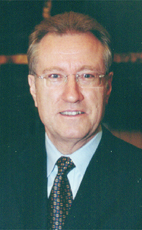Madam Chairman, as I have said earlier tonight, the mission of the Canadian forces is: first, to protect Canada and Canadians; second, to work with the United States in the defence of our continent; and third, to contribute to international peace and security.
We have an obligation to ensure we have the resources we need if we face any kind of disaster, natural or man made. One of the best illustrations of how we have been able to do this is the turn of the millennium when we were concerned about Y2K. At the time we had over 4,000 troops abroad, similar to what we have now. Yet between regulars and reservists we were able to pull together some 25,000 troops on standby in case we ran into difficulties with Y2K.
In 1998 during the ice storm we had almost 3,000 troops abroad, yet we were able to put 18,000 troops on the streets in our communities in Quebec and Ontario. We brought them in from different parts of the country. It is all part of the planning we do to ensure there is covering off for any units that are away.
We have a coming challenge with respect to Kananaskis where we would operate in a support role with the RCMP. Again, all these things must be taken into consideration when we plan overseas missions because we have the responsibility to protect Canada and Canadians and will continue to make sure we have the resources necessary to do that.
This is also a case where reservists become important. They are all over the country. During the ice storm people from reserve communities across Canada along with the regulars came into Ontario and Quebec to serve the needs of people in those communities. At the same time we had a substantial contribution abroad in peace support operations.

